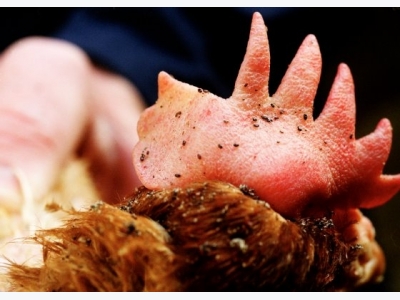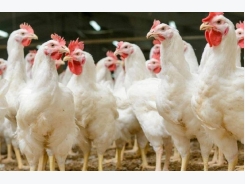Challenges and solutions in coping with poultry red mite

Delegates at the International Egg Commission’s conference in Bruges were given an update on the spread of poultry red mite, the ongoing scientific work and solutions to controlling outbreaks.
Photo: Van Assendelft Fotografie
Red mite is increasingly becoming one of the most substantial issues facing egg producers and is now prevalent across much of the globe.
Presenting an overview, Farhad Mozafar, of Lohmann Tierzucht, told delegates that the night bloodsucking mite had first been documented back in 1778 and was now widespread across Europe, the Middle East and the Far East. Only North America is currently free from mite.
Mr Mozafar said the mite, which thrives in high temperatures and high humidity and has a life cycle of between 7-17 days, spreads easily on poultry farms through wild birds, insects, rearing units, rodents, poultry litter, pests and humans.
It led birds to become restless at night, caused skin and feather irritation, could lead to feather pecking and cannibalism and disturbed the egg function at night. In moderate to severe cases, it led to anaemia, weight loss and immune-suppression.
A colony of 5,000 red mites feeding on a bird could reduce its weight by 1g/day but this rose to 10g/day if there were 50,000 mites and 100g/day if there were 500,000 mites: “Very severe infestations led to death, less severe led to a higher feed conversation rate and a drop in egg production,” he said.
There was also scientific evidence that the mites can carry and pass on other diseases, including avian influenza.
Mites can also survive for very long periods without feeding: “They can survive without a single meal for a year or longer and can tolerate temperatures of up to 45°C and below -25°C.
Mr Mozafar said the mites were developing resistance to the acaricides pesticide and this resistance accelerated if the application was given incorrectly.
Professor Olivier Sparagano, associate pro vice-chancellor (research) at Coventry University, talked about the work of COREMI, which is improving current understanding and research for sustainable control of the poultry red mite.
There are 28 countries involved in COREMI and Prof Sparagano said latest figures suggested the total annual cost of poultry med mite infestations in the European egg laying industry is estimated to be €231m and €3.2bn worldwide.
He urged the International Egg Commission to set up a working group on red mite, saying the growing resistance to Carbaryl and Permethrin based insecticides meant there were not many solutions available.
This was leading to products from the black market being used, as seen in the recent fraud case involving Fipronil.
Prof Sparagano said a multidisciplinary coordinated approach was needed to tackle the mite, particularly as more poultry keepers were facing skin rashes and disorders.
“We need to work with physicians who don’t understand the problem and its threat potential, entomology experts, dermatologists and vets.”
He said there had been positive drivers in the last five years include greater communication and education of the issue and a few vaccine candidates are emerging with good laboratory results. But this was tempered by the number of products disappearing from the market not being compensated by new ones and more human health issues.
Dr Monique Nel, researcher at Wageningen University, Netherlands, said a sustainable solution through integrated pest management was the way forward in tackling the mite.
Dr Nel warned that by not dealinig with red mite poultry producers faced a raft of other diseases, including salmonella.
“Solely using chemicals is a dead-end solution. You can’t just spray and think the outbreak is over. It is only sustainable as part of an integrated pest management policy, which requires constant effort, time, money and attention.”
She advocated a prevent and suppress policy, stressing the importance of removing soft and hard manure and cleaning the poultry house. It was vital to cover conveyor belts, aeration pipes, air mixing boxes and other pieces of equipment. Other suppressive measures included the use of liquid silicon or green soap and predators.
Farmers need to take care in monitoring infestations of the mite so that they knew when to use the best treatment. An automated mite monitor might be the answer or a visual manual scoring system or traps. Deciding when the mites had reached a threshold was tricky, she admitted, adding that she would like to see more product authorisations and further research in this area.
Có thể bạn quan tâm
Phần mềm

Phối trộn thức ăn chăn nuôi

Pha dung dịch thủy canh

Định mức cho tôm ăn

Phối trộn phân bón NPK

Xác định tỷ lệ tôm sống

Chuyển đổi đơn vị phân bón

Xác định công suất sục khí

Chuyển đổi đơn vị tôm

Tính diện tích nhà kính

Tính thể tích ao hồ



 Scientists look at genetics behind chicken weight gain
Scientists look at genetics behind chicken weight gain  Natural coccidiosis prevention concept
Natural coccidiosis prevention concept